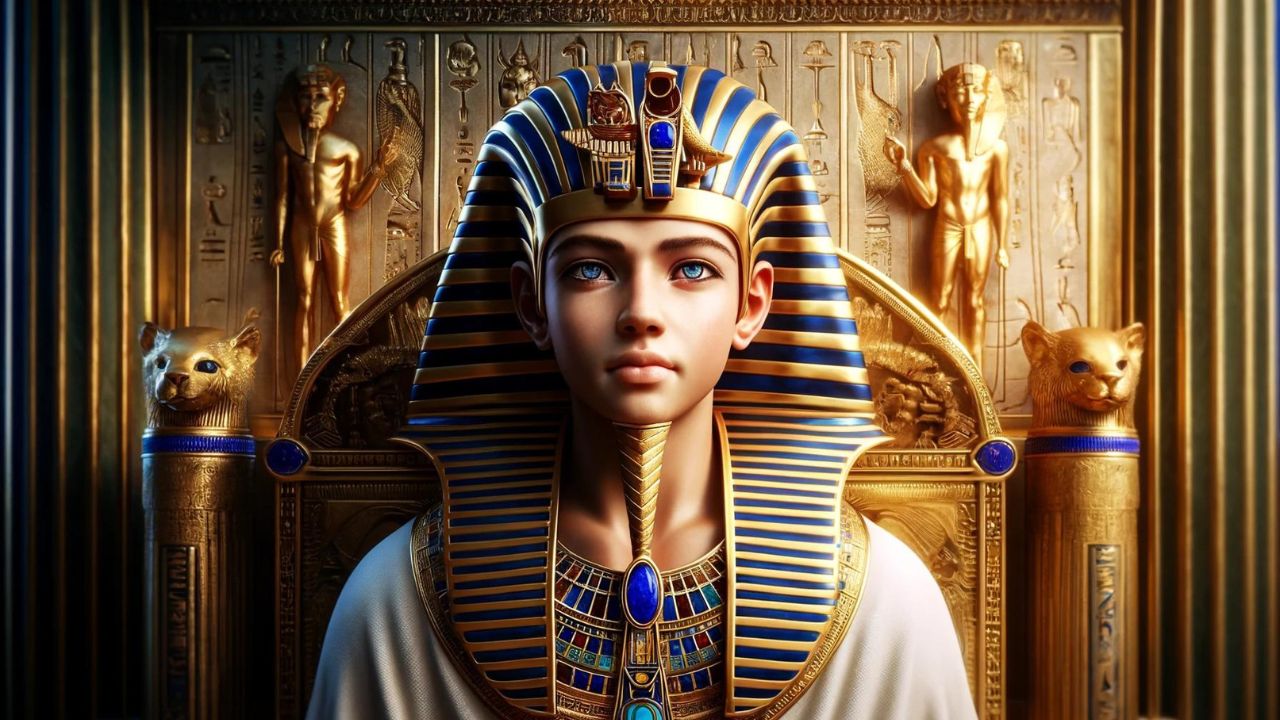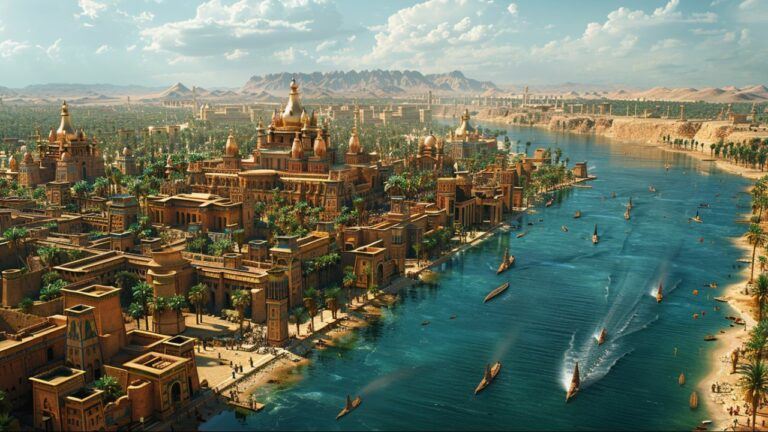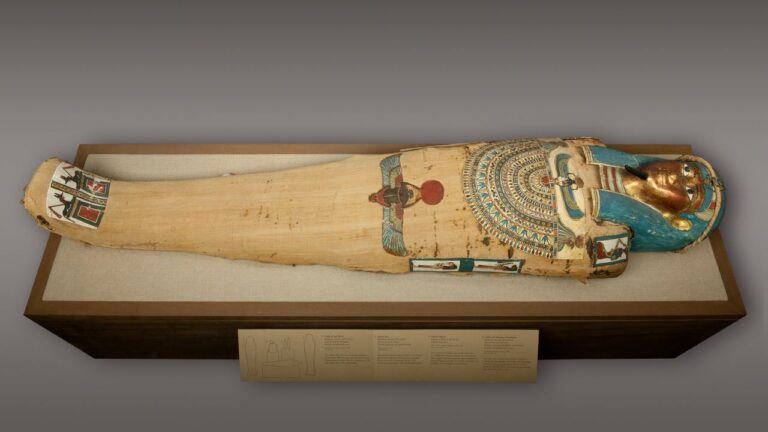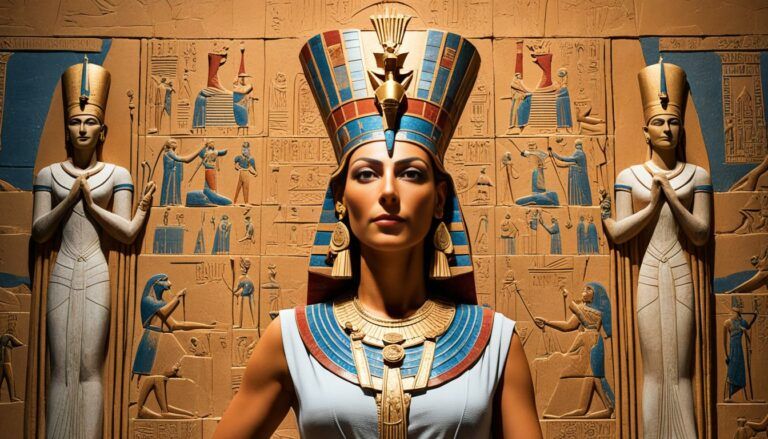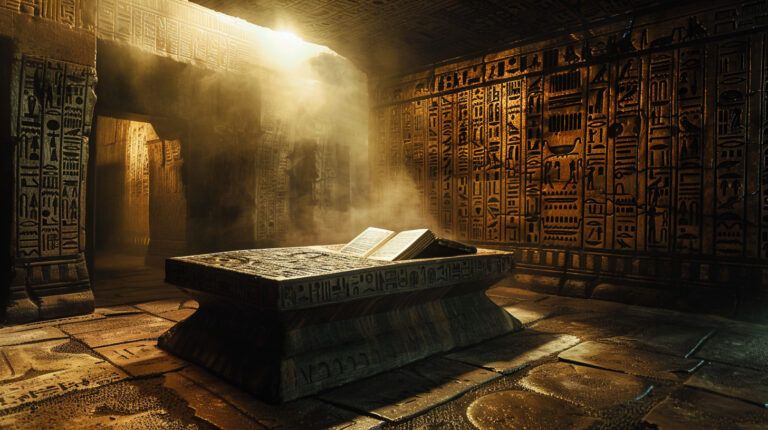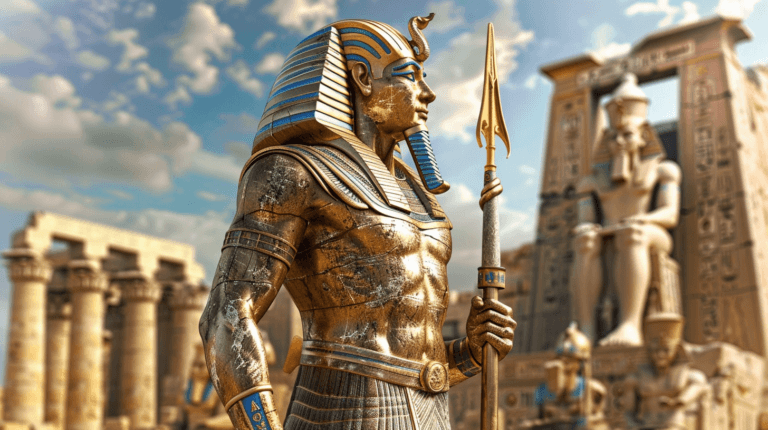What Were King Tut’s Greatest Achievements?
Within the pages of history, I’ve always found the tales of ancient Egypt to be incredibly fascinating, particularly those of the boy king, Tutankhamun. Despite his premature death at the early age of 19, King Tut’s legacy continues to captivate researchers and history enthusiasts alike. So, what were King Tut’s greatest achievements? It’s widely accepted that his ascension to the throne marked the beginning of significant restorations to Egyptian traditions and religion following the tumultuous reign of his father, Akhenaten.

What Were King Tut’s Greatest Achievements?
Though his rule was brief, one of his most noteworthy accomplishments was the reinstatement of the traditional polytheistic religion that his predecessor had replaced with monotheistic Aten worship. This critical decision helped to stabilize an Egypt that had experienced religious and artistic upheaval.
His efforts to re-establish the worship of Amun, alongside other deities, played a central role in restoring and preserving the rich cultural tapestry of ancient Egyptian society. A move that was well-received by the priesthood and the people.
The name, Tutankhamun, which means “the living image of Amun,” reflected this return to tradition. The treasures contained within his famous tomb, KV62, located in the Valley of the Kings, are a testament to the opulence and artistic finesse of his era.
Discovered by Howard Carter in 1922, the nearly intact tomb provided an unparalleled look into King Tut’s life and the 18th Dynasty of Egypt, offering precious insights that continue to shape our understanding of ancient Egyptian civilization.
Rise to the Throne and Early Reign
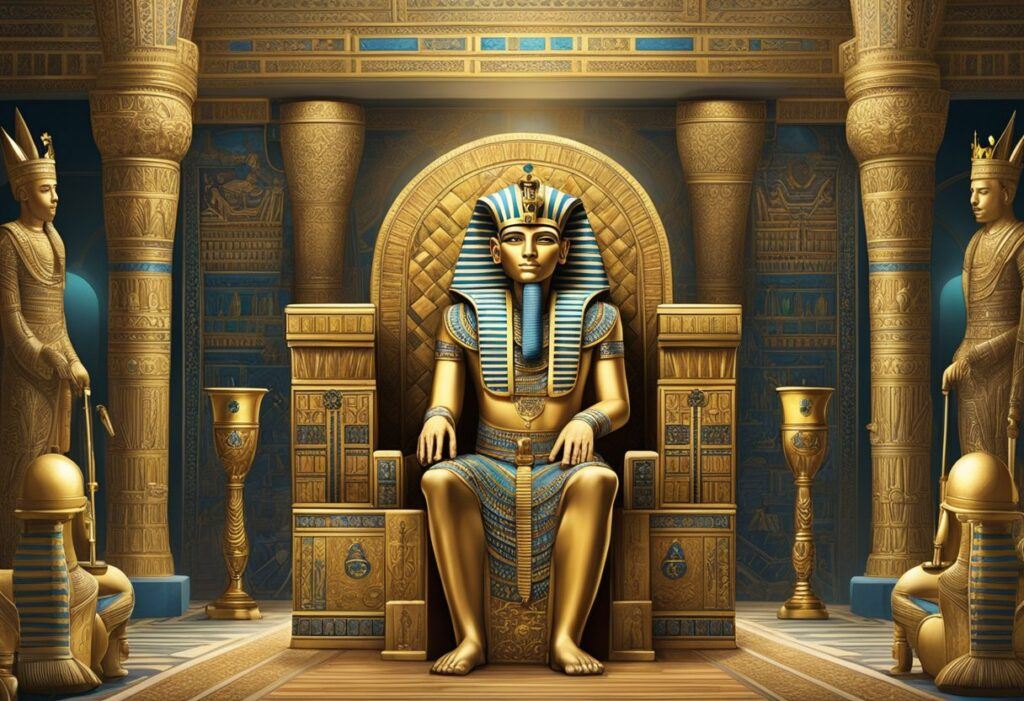
Before I dive into the specifics, it’s essential to understand that King Tut’s rise to power occurred against a backdrop of religious upheaval and restoration. As a young pharaoh, his reign marked a crucial period of political and theological transition.
Family Lineage and Ascension
King Tut’s background shaped his destiny. He was the product of the 18th dynasty, likely born to Akhenaten and a royal woman known as The Younger Lady. His father had radicalized Egypt’s religious landscape, introduced the worship of Aten and deemphasized the traditional pantheon.
However, upon his death in 1336 BCE and Tut’s subsequent ascension to the throne at approximately nine years old, the guidance of regents, such as Ay and Horemheb, was crucial. His inexperienced age necessitated such guidance during the early stages of his rule.
Religious Context and Changes
The period just before and during his reign is historically significant for the dramatic religious shifts. Akhenaten, had introduced the worship of Aten. After his ascension, he faced the daunting task of navigating Egypt’s fragile religious state.
Key to his rule was the reversion to the worship of Amun and the restoration of traditional Egyptian religious practices. This shift marked a return to the past and was pivotal in realigning Egypt with its cultural heritage after the controversial Amarna Period.
Domestic Affairs and Administration
His reign focused on stabilizing Egypt’s internal affairs. This involved reinstating Thebes as the religious capital and distancing his rule from Akhenaten’s Amarna legacy. To administrate efficiently, Ihe relied on advisors like Ay and Horemheb. Notably, he married Ankhesenamun, his half-sister, thereby solidifying his position within the royal family. Though young, his administration made significant efforts to manage Egypt’s affairs, preserving the nation’s stability and prosperity.
Tutankhamun’s Tomb and Its Discovery
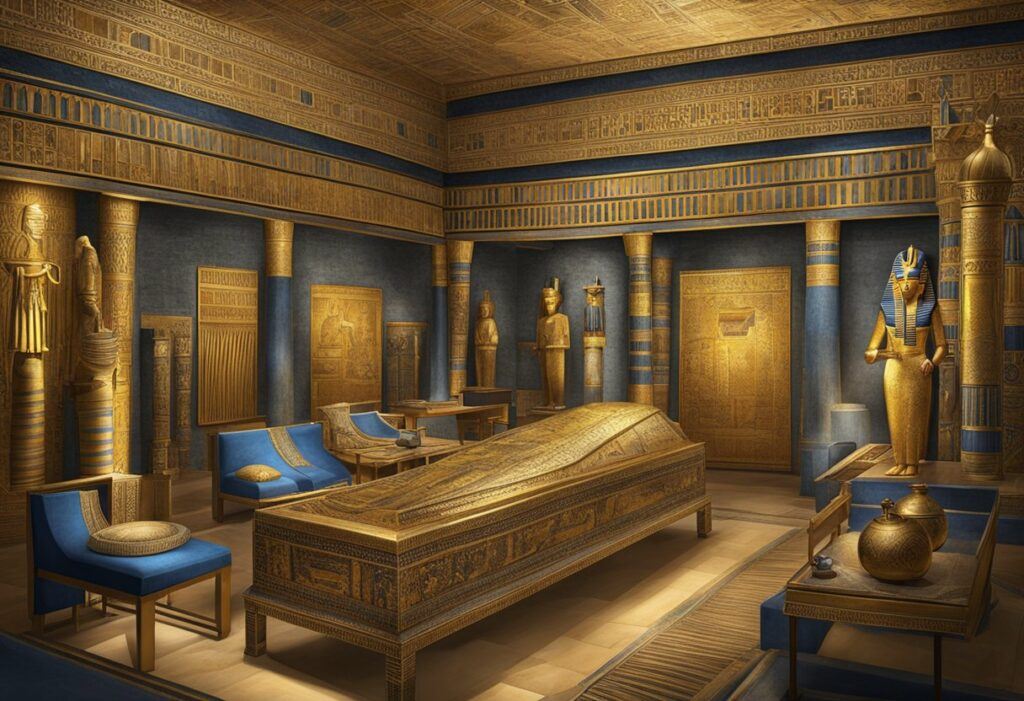
I’ve always been captivated by the stories of ancient Egypt, and among the most intriguing is the discovery of Tutankhamun’s tomb. Let’s explore the remarkable find by Howard Carter and the wealth of treasures and artifacts it contained.
Finding the Tomb
In 1922, Howard Carter, a British archaeologist, and his financial backer, Lord Carnarvon, achieved the momentous discovery of Tutankhamun’s tomb, designated KV62, in the Valley of the Kings. After several years of diligent search, they located the nearly intact tomb, which was an extraordinary find due to the fact that many royal tombs had been plundered in antiquity.
Treasures and Artifacts
Inside the tomb lay an astonishing collection of treasures and artifacts, meant to accompany the young pharaoh into the afterlife. My eyes widened at the detailed accounts of the golden sarcophagus, the iconic death mask, and over 5,000 other items, including burial goods, furniture, and jewelry. The discovery of these items gave incredible insight into the opulence of ancient Egyptian royalty and their burial rites.
Cultural and Scientific Impact
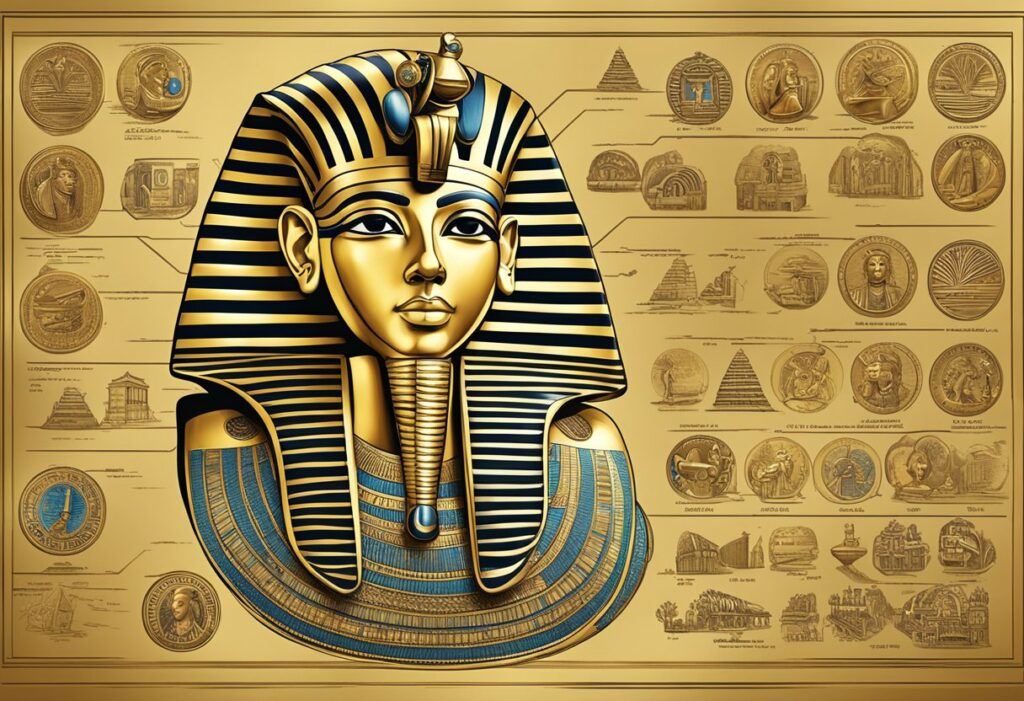
King Tutankhamun’s reign may have been brief, but its influence on both the cultural and scientific domains is noteworthy. My exploration here focuses on his era’s artistic innovations and the subsequent medical revelations his remains have facilitated.
Contributions to Arts and Culture
Tutankhamun’s time as pharaoh saw a significant revitalization of art and culture in ancient Egypt. Following a period where religious upheaval had taken center stage during his father Akhenaten’s rule, Tutankhamun, with his advisors, restored Thebes, now known as Luxor, to its former glory.
This restoration included considerable additions to Luxor Temple and Karnak, enriching the artistic heritage of the region. Objects found in his tomb, such as chariots, furniture, and jewelry, continue to contribute profoundly to our understanding of craft and design during the 18th dynasty.
The aesthetics of these items showcase a skillful blend of form and function, characterized by intricate designs, which highlight a sophisticated understanding of craftsmanship from that era. These creations not only served practical purposes but also stood as symbols of the pharaoh’s stature and his culture’s artistic prowess.
Medical and Scientific Analysis
King Tutankhamun’s mummy provided unprecedented opportunities for medical and scientific analysis. By examining his remains, scientists have made speculative diagnoses of diseases, such as malaria, and assessed potential causes of his early demise, including infection or accident.
For instance, research utilizing modern scanning technology has allowed for a detailed study of King Tut’s physical condition, offering insight into the health challenges he may have faced. This analysis makes strides in bridging historical records to current scientific understanding, illustrating how even millennia later, the bodies of the past can inform contemporary health and medicine.
Legacy and Influence on Modern Understanding
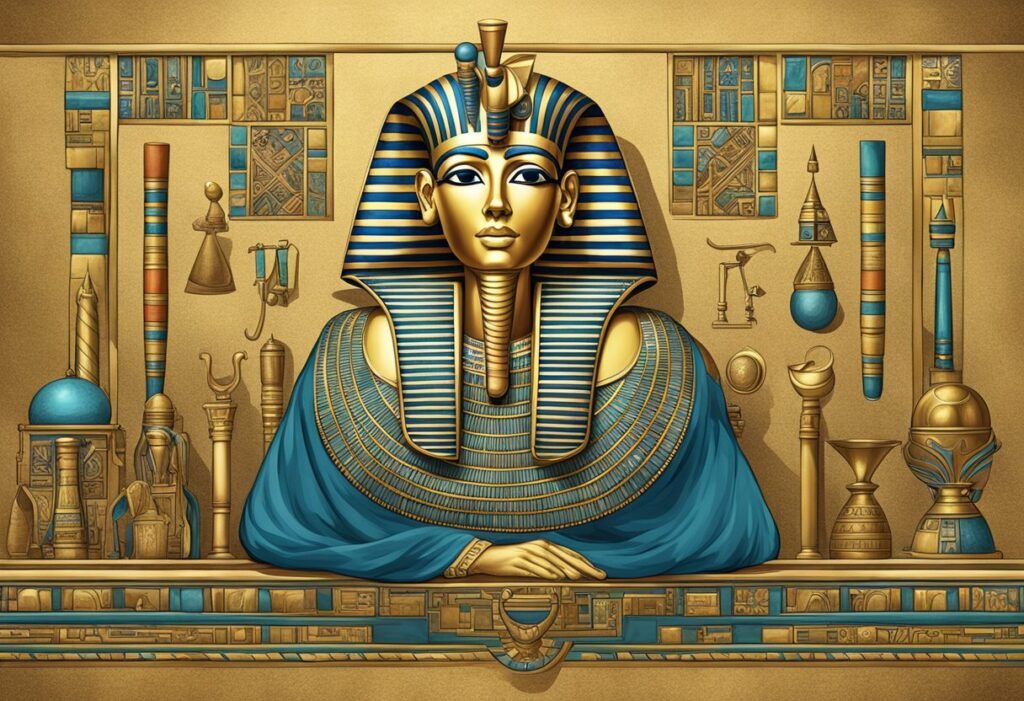
When I delve into the legacy of Tutankhamun, commonly known as King Tut, it’s crucial to emphasize the sheer impact his discovery had on both the scholarly and public domains of Egyptology. The intact tomb of King Tut, unearthed in 1922, offered an unparalleled look into the wealth and burial customs of an ancient Egyptian pharaoh, sparking a worldwide surge in Egyptomania.
The artifacts within the tomb – including the iconic gold mask now associated with the young king of ancient Egypt – continue to captivate millions. These treasures, initially housed in the Egyptian Museum and set to feature prominently in the Grand Egyptian Museum, not only contribute to Egypt’s popularity but also its economy, drawing tourists from around the globe.
Certainly, the curse of the pharaohs narrative, irrespective of its authenticity, has maintained public fascination and influenced countless works in popular culture, from literature to cinema. Whether it’s the supposed curses or simply the splendor of Tutankhamun’s burial goods, my interest is constantly renewed by the ongoing explorations and studies surrounding his life and rule.
Meanwhile, the conversations and research surrounding Tutankhamun help me understand the advances that ancient Egyptians made in art and governance, further affirming Tutankhamun’s status as an emblem of ancient Egypt.

